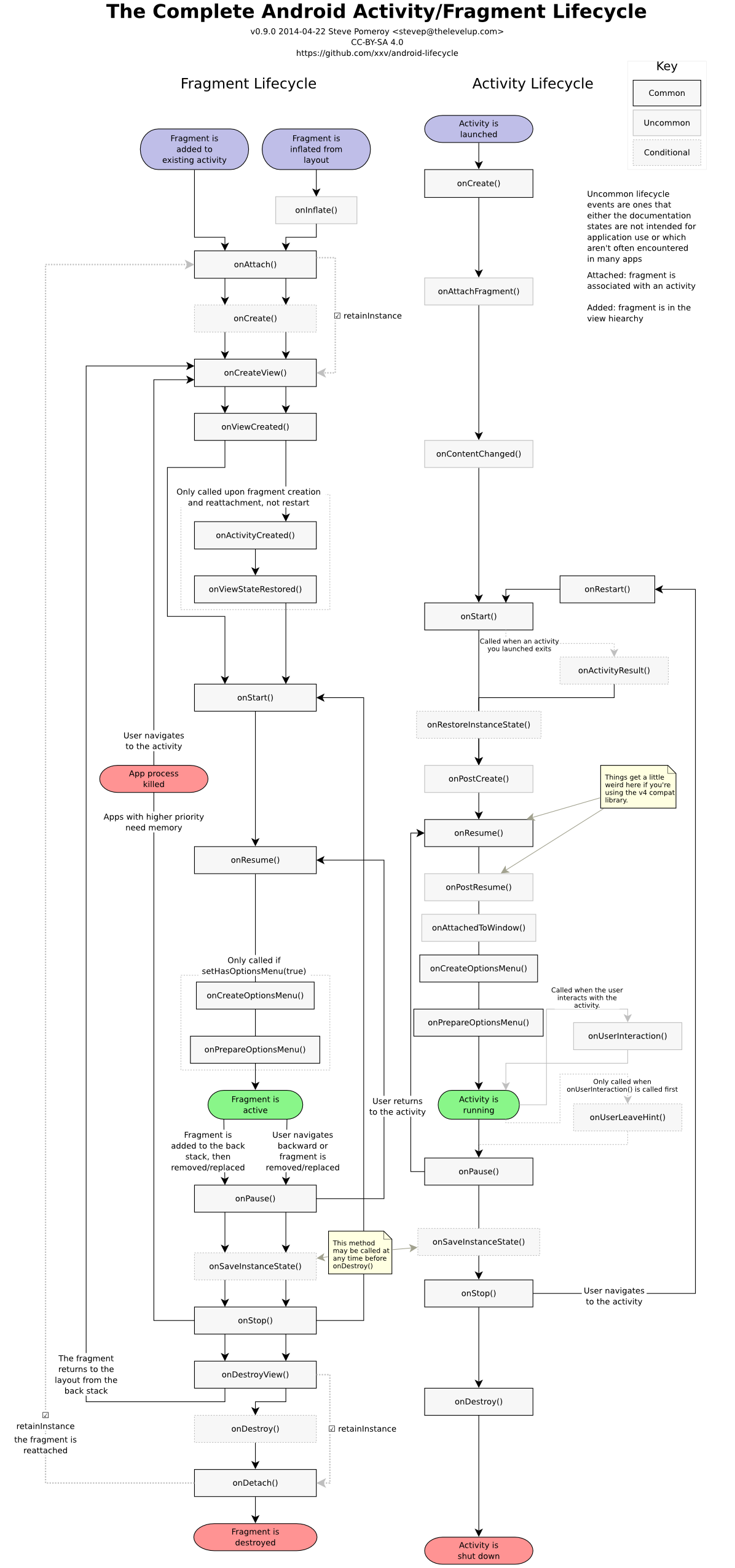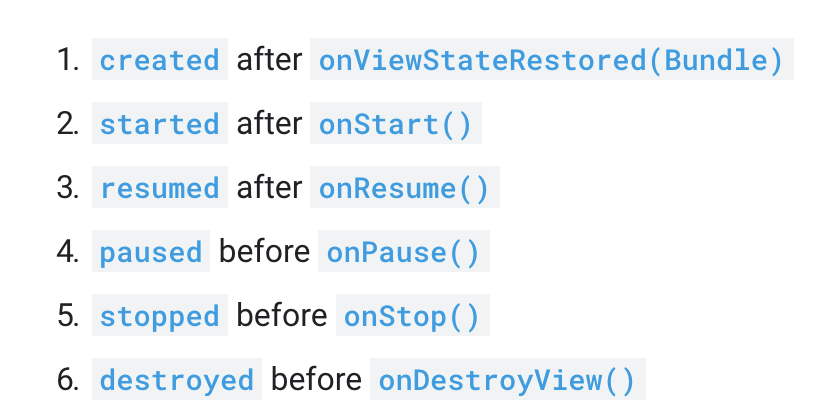Google introduced Android architecture components which are basically a collection of libraries that facilitate robust design, testable, and maintainable apps. It includes convenient and less error-prone handling of LifeCycle and prevents memory leaks.
Although these components are easy to use with exhaustive documentation, using them inappropriately leads to several issues which could be difficult to debug.
Problem
One such issue our team came across was observing LiveData from ViewModel in Fragment. Let’s say we have two Fragments: FragmentA (which is currently loaded) & FragmentB which user can navigate to. FragmentA is observing data from ViewModel via LiveData.
When
- The user navigates to FragmentB, FragmentA gets replaced by FragmentB and the transaction is added to backstack.
- After some actions on FragmentB user presses the back button and returns to FragmentA
Then
- LiveData observer in FragmentA triggered twice for single emit.
Following is the code Snippet:
1 | @Override |
If the user navigates to FragmentB again and presses back to visit FragmetnA, the LiveData observer was triggered thrice and it conti01nued to increase
Debugging Approach
The initial thought was somehow(due to Fragment going though lifecycle) ViewModel was triggering LiveData multiple data on the same Observer. We added the following log to ensure this is the case:
1 | @Override |
After closely observing the hashCode() we discovered that same LiveData was observed twice and whenever value for LiveData was set multiple Observer instances onChanged() were called. This is because the observers were not getting removed when **FragmentA**was getting replaced.
One quick fix we did was to removeObservers() before observing again as follows:
1 | viewModel.getProducts().removeObservers(this); |
Since its more of a workaround and would be difficult to maintain(each Observe requires removeObservers), I tried to find a proper fix.
In order to do that I had to understand:
- Fragment Lifecycle
- How LiveData observers are removed
- Why
onActivityCreatedfor observing LiveData?
Fragment Lifecycle
After searching a bit I came across the following diagram which gave a better understanding of Fragment Lifecycle:
Further researching on Fragment I found there are two distinct lifecycles associated with fragment:
The lifecycle of the **Fragmetn**Fragment

Image from https://github.com/xxv/android-lifecycle
Since the image itself is self-explanatory, I won’t go in details. More information can be found here.
The lifecycle of each view hierarchy
This was something interesting which I never knew. The lifecycle of a Fragment’s view is:

Screenshot from dev doc
How LiveData observers are removed
Based on the documentation:
You can register an observer paired with an object that implements the
LifecycleOwnerinterface**. This relationship allows the observer to be removed when the state of the corresponding****Lifecycle**object changes to**DESTROYED**. This is especially useful for activities and fragments because they can safely observeLiveDataobjects and not worry about leaks—activities and fragments are instantly unsubscribed when their lifecycles are destroyed.
Solution
- The lifecycle of
FragmentwhenFragmentAis replaced byFragmentBand the transaction is added to backstack, the state ofFragmentAlifecycle isonDestroyView. - When the user presses back on
FragmentB,FragmentAgoes throughonCreateView()→onViewCreated→onActivityCreated - Since
FragmentAis never destroyed, the previousObserveris never removed. As a result, each timeonActivityCreatedwas called, a newObserverwas registered with the previous one still around. This causedonChanged()called multiple times. - One proper solution is to use
getViewLifeCycleOwner()as LifeCycleOwer while observingLiveDatainsideonActivityCreatedas follows:
1 | viewModel.getMainTab().observe(getViewLifecycleOwner(), new Observer<Integer>() { |
Note:
The first method where it is safe to access the view lifecycle is
onCreateView(LayoutInflater, ViewGroup, Bundle)under the condition that you must return a non-null view (an IllegalStateException will be thrown if you access the view lifecycle but don’t return a non-null view).
But why not observe in onCreate instead of onActivityCreated?
Based on the documentation:
Generally, LiveData delivers updates only when data changes, and only to active observers. An exception to this behavior is that observers also receive an update when they change from an inactive to an active state. Furthermore, if the observer changes from inactive to active a second time, it only receives an update if the value has changed since the last time it became active.
If we observe in onCreateand Fragment’s view is recreated (visible → backstack → comes back), we have to update the values from ViewModel manually. This is because LiveData will not call the observer since it had already delivered the last result to that observer.
Conclusion
Based on my research:
- User
getViewLifecycleOwner()when you want to observe forLiveDatainsideonActivityCreated. - If you want to manually update the views and values when Fragment is recreated, observe the LiveData in
onCreate()
来源:
https://medium.com/@begalesagar/observe-livedata-from-viewmodel-in-fragment-fd7d14f9f5fb